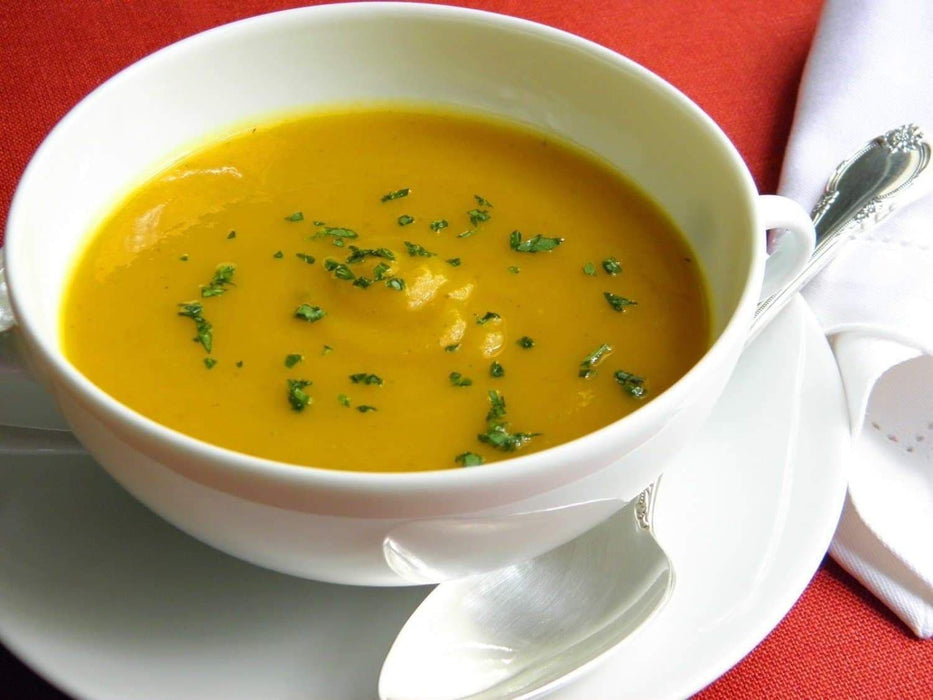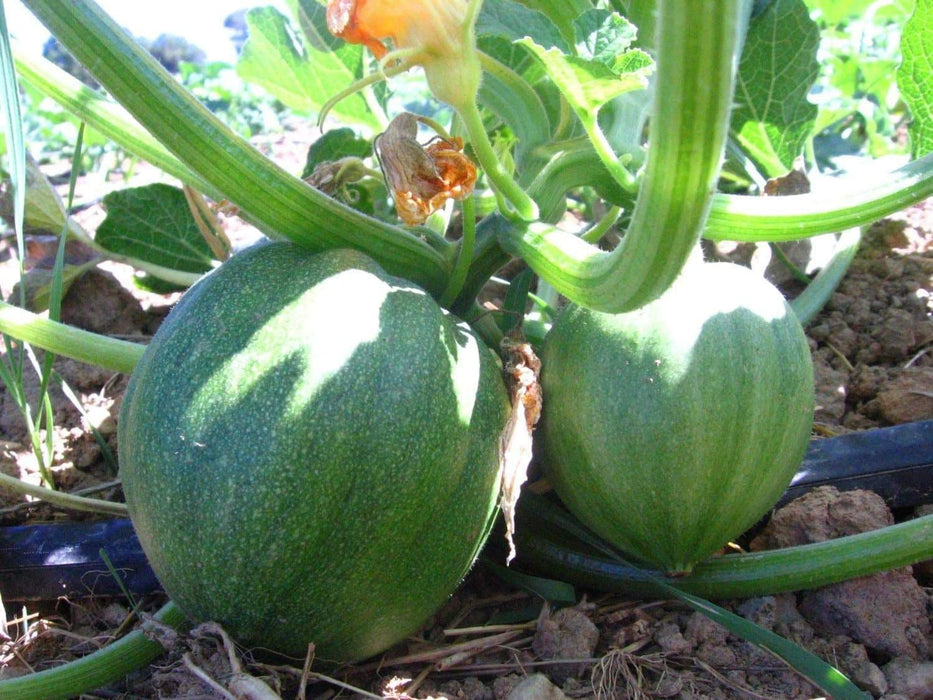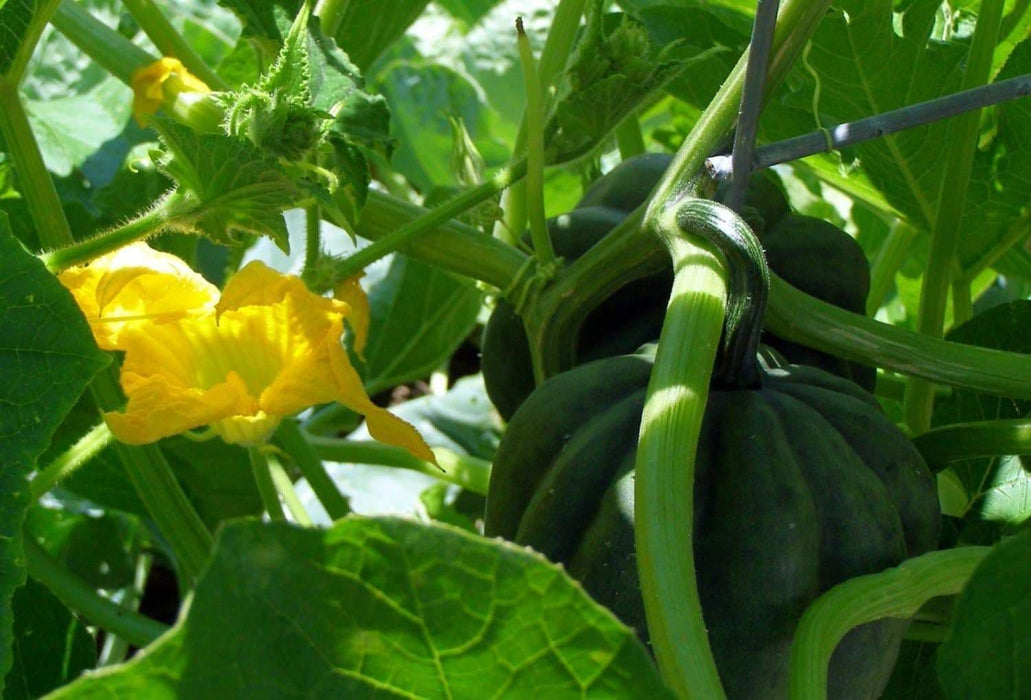
Table Queen ,Winter Squash Seeds
Most orders are processed by the next day
Select your desired size and/or color from the available options.
Table Queen Acorn Winter Squash,Organic,Organic HEIRLOOM Seeds, highly productive ! Open Pollinated.
Table Queen Acorn Squash
Vigorous vines of the Table Queen Acorn Squash produce medium sized dark olive-green acorn shaped fruits with deep ribs. Productive and compact!
Sweet, dry, golden-yellow flesh is excellent for baking. Great keeper! Mature fruit are 5-6" long by 4-4.5" in diameter with a thin hard shell. Average: 80 days
Detailed planting instructions:
Squash like warm soil and are very sensitive to frost. So donât be in a rush to plant early in spring. Wait until danger of frost has passed and soil has warmed to about 70 F, or about 2 weeks after the last frost date.
Unless you are trying to grow a long-season variety in an area that gets early frosts, thereâs really no need to start winter squash inside. Instead, direct seed ½ to 1 inch deep into hills (which warm and drain earlier in the season) or rows. Sow 4 to 5 seeds per hill. Space hills about 4 to 8 feet apart, depending on the size of the fruit. (The larger the expected size of the squash, the larger the vine and the farther apart you should space the hills.) When the plants are 2 to 3 inches tall, thin to 2 to 3 plants per hill by snipping off unwanted plants without disturbing the roots of the remaining ones. In rows, sow seeds 6 to 12 inches apart in rows 4 to 8 feet apart. Snip off plants to thin to one plant every 18 to 36 inches.
If you need to start plants early, plant inside in 2- to 3-inch pots or cells 3 to 4 weeks before transplanting outside. Sow 3 or 4 seeds per pot and thin to one or two plants by snipping off the weaker plants to avoid damaging the roots of those that remain. Harden off by cutting back on water and reducing temperature before transplanting. Plant transplants out in the garden at the same final spacings above after all danger of frost has passed.
If you need to start plants early, plant inside in 2- to 3-inch pots or cells 3 to 4 weeks before transplanting outside. Sow 3 or 4 seeds per pot and thin to one or two plants by snipping off the weaker plants to avoid damaging the roots of those that remain. Harden off by cutting back on water and reducing temperature before transplanting. Plant transplants out in the garden at the same final spacings above after all danger of frost has passed.
Mulching plants helps retain moisture and suppress weeds. Mounding soil around the base of the plants can discourage squash borers from laying eggs.
HARVESTING
When the stems turn a light green yellow color, the squash should be fully ripe. The rind will be thick and tough. Cut, do not pull, the ripe fruit from the plant. Two to three inches of stem must remain for proper storing. This may increase the sugar content.
SAVING SEEDS
Insect pollinated. Take caution unless you are hand pollinating, as many summer squash varieties are the same species as many pumpkins and winter squashes. Different varieties of the same species need to be isolated by 1/4 mile to prevent cross-pollination. Barriers such as tree lines, woods or buildings existing between the fields can reduce this distance. Treat summer squash the same as usually done for winter storage of squashes and pumpkins, allowing summer squash varieties to grow to a large size with a hard outside skin. After all squashes have reached this stage, harvest and let them sit for a period of after-ripening for 3-6 weeks or up to several months. Remove the seeds, rinse in water and dry. Use of a 1/2" and 1/4" screen can help with cleaning. Squash seeds remain viable for 6 years under cool and dry storage conditions.
TIP: Remember to keep them picked at about the size of a large cucumber and they will just keep coming.
Did You Know? Most of a squash's nutrients are found in the skin.
Materials: pies instead of pumpkins,garden,heirloom,Squash,Winter,Vegetable Spaghetti
LET OUR CUSTOMER SPEAK FOR US

![[Seeds] - Caribbeangardenseed](http://caribbeangardenseed.com/cdn/shop/files/gift-card-gift-card-1_1024x1024_dfa857db-9150-4315-a362-7f0bb3fb9c47_60x28.png?v=1703978838)



